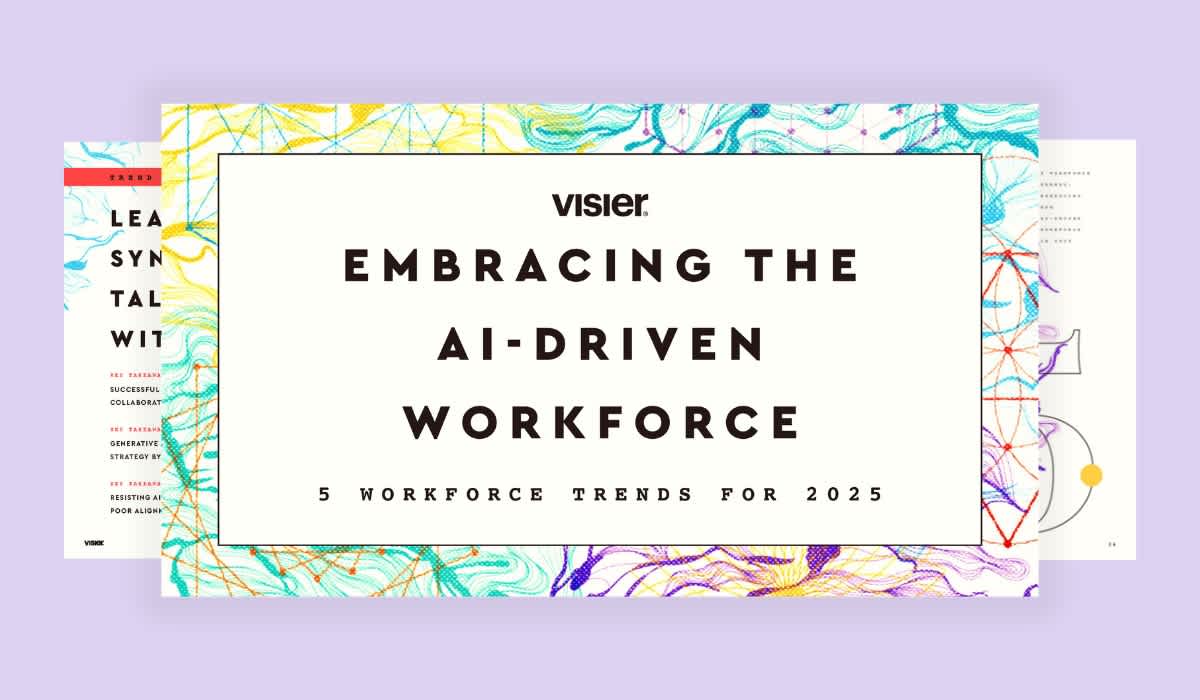How to Prepare Your Data for Generative AI
How do you build generative AI that bridges the gap between HR and business outcomes? You need a data strategy and platform that makes insights accessible—securely. Find out more.

Generative AI has the potential to transform how HR software is bought, sold, and used. Before you can deliver cutting-edge analytics to your customers, you need to prepare your data, train your generative AI, and create robust security protocols.
An Al strategy requires having a data strategy. As McKinsey notes, without good, clean data that is easily accessible across the business, it will be impossible to generate business, operational, and Al value.
Trustworthy, organized, secure, and accessible data is the prerequisite to generative AI. Read on to find out how you can start preparing your data—and your software—for the next wave of innovation.

1. Clean and organize your customer data
People data is notoriously messy and complex. You’ll need to develop an effective data quality strategy to prepare for leveraging generative AI. This requires having a thorough understanding of your data infrastructure, including how data is collected, and where it’s collected from.
Once you’ve gathered your customer data, the next step is cleaning it. This involves ensuring data used for decision-making is reliable and of high quality. You’ll fix or remove inaccurate, duplicate, incorrectly formatted, corrupted, or incomplete data, fix structural and formatting discrepancies, and fill data gaps.
If you haven’t already, it’s essential to establish a data model that will give meaning to different data objects or items. This will also ensure consistency and accuracy in data management. With a mix of structured and unstructured data, as is common with people data, you need to provide as much standardization and normalization as possible.
Meanwhile, relevant data might be stored in disparate places, so you’ll need to map out where data is needed and eliminate siloes or manual processes that can slow down or prevent access. With a common crosswalk between systems, your customers can better connect to a bigger workforce picture and see how it connects to their organizational goals.
2. Safeguard sensitive data, preserve customer trust
People data is among the most sensitive information that organizations hold. Preventing unauthorized access is essential when working with genAI. The challenge is twofold: you need to train your genAI without exposing or involving sensitive customer data, and create a usable, insightful product while ensuring employee data is delivered to the right people at the right time.
Generative AI needs to be trained on huge amounts of relevant, organized data. This is how it learns to understand, process, and answer HR-related questions. Every additional data source adds context and intelligence to your large language model (LLM) or machine learning model.
But you can’t just train genAI on employee data. The data must be anonymized and normalized so that no piece can be traced back to your customers or any of their employees.
At the same time, you need to ensure security and data access protocols that prevent unauthorized access to sensitive information are in place. Dynamic roles and permissions ensure that each user can only access the information they need to do their jobs. It also allows for quick permissions updates when business needs change. With this kind of granular permission structure, genAI will only deliver answers and information to users who are authorized to see them.
Even with reporting and analytics, security is a table stake, especially as you add complexity with access to data from different systems and point-in-time data. Connect your data into a single layer that you can deploy with HR-specific security, privacy, and compliance in mind with a unified data governance solution. Without this as the first step, your genAI won’t be safeguarded from malicious manipulation attempts.
3. Build on the right people data platform
Your customers can’t make sense of something that exists in chaos. A good data strategy and a platform designed for HR data are the keys to harnessing the power of genAI. But designing and deploying people analytics is complex and time-consuming, especially if you don’t already have the right talent in-house.
Visier's real-time people data platform takes you from disparate, messy people data to actionable insights in record time. It covers the entire HR analytics lifecycle—from unifying your application’s data to preparing it for genAI and delivering insights to customers.
You can ingest, process, store, enrich, and serve data in one unified platform, eliminating patchwork infrastructure and tech debt. With Visier’s futureproof platform, you can start small and scale fast with unmatched capability, flexibility, and control—and no downtime.
Generative AI offers a huge growth opportunity for HR software vendors, and the road to providing it to your customers might be smoother than you think. With help from Visier, you can deliver cutting-edge genAI and analytics to your customers without steep development costs or long and arduous build timelines.

Build genAI and people analytics into your app
To make sense of the changing world of work, businesses of all sizes need analytics. There are typically three paths software vendors can take based on their goals—read about them here.
Software vendors that have embraced genAI in their HR technology offerings are reaping the revenue rewards. Here’s how you can catch up fast.
Contextual analytics delivers answers directly in the platforms people already use, bringing data and insights into the ways they already work. Learn how to combine the power of contextual and embedded analytics here.
GenAI can be used throughout the employee lifecycle to increase productivity and support strategic workforce planning. Get the scoop.
Embedded analytics are analytics capabilities that are integrated within another application—and the value goes far beyond just convenience. Here's what you need to know.


